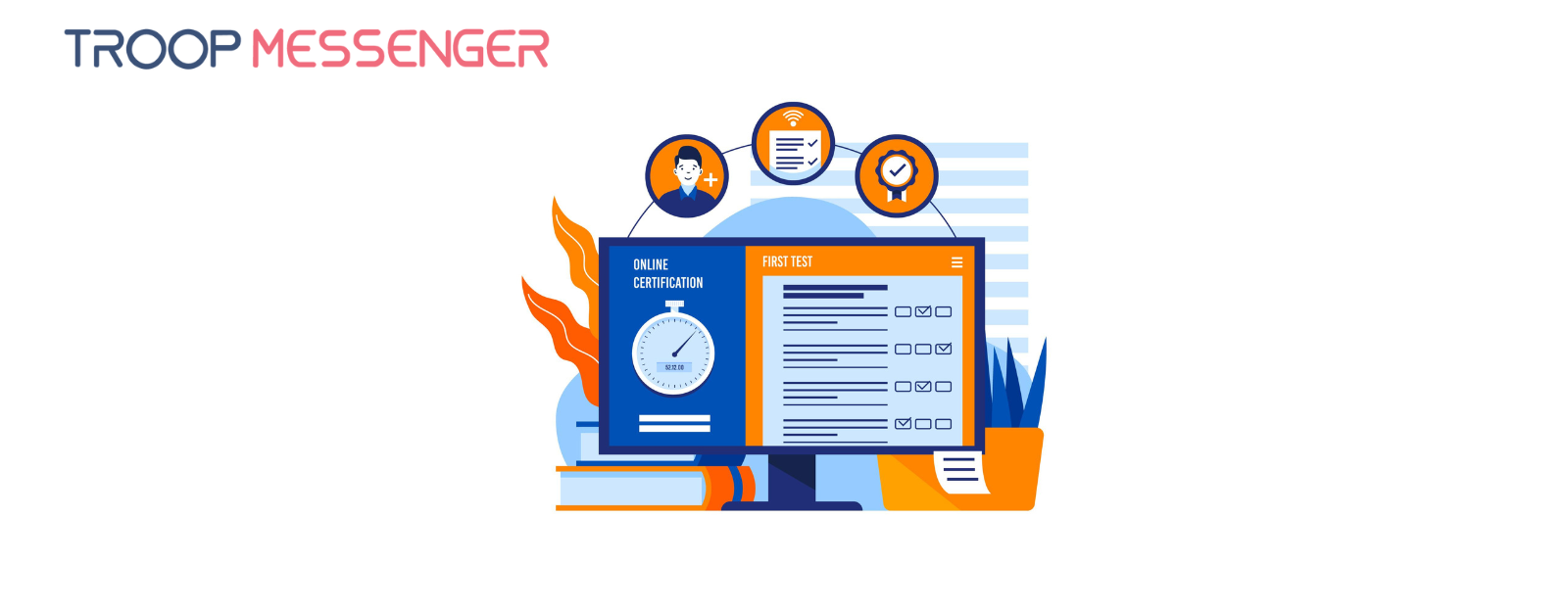Connect with us

How Businesses Can Leverage AI to Automate Their Workflows
In today's rapidly evolving business landscape, the integration of artificial intelligence (AI) has become increasingly prevalent, offering a multitude of opportunities for workflow automation. Let's delve into ten specific ways in which businesses can harness AI to streamline their operations effectively.
Automating Data Analytics
In today's data-driven business landscape, the ability to swiftly and accurately process vast amounts of data to make informed decisions is paramount. Artificial intelligence (AI) offers a solution by automating data analytics processes that allow for better collaboration between humans and AI.
AI algorithms can efficiently sort, compile, and analyze large volumes of data, extracting valuable insights and trends in a fraction of the time it would take a human.
By automating data analytics, businesses can streamline operations, make data-driven decisions, and gain a competitive edge in their respective industries. This automation not only enhances productivity but also ensures that organizations are equipped to adapt and respond swiftly to changing market dynamics.
What’s even more impressive is the speed at which AI-powered data analytics systems provide organizations with a comprehensive understanding of their operations, customers, and market trends.
By leveraging AI to automate data analytics, businesses can uncover hidden patterns, identify emerging opportunities, and mitigate potential risks. Whether it's optimizing supply chain management, refining marketing strategies, or improving customer service, AI-driven data analytics or innovative tools like trade compliance software enable organizations to make informed decisions that drive growth and innovation, empowering businesses to stay agile, efficient, and ahead of the curve.
Decreasing Manual Tasks
Manual, repetitive tasks are a significant drain on organizational resources and employee morale. AI allows businesses to automate them.
AI-driven automation tools can handle a wide range of routine tasks, from data entry and processing to customer inquiries and administrative duties. By delegating these tasks to AI-powered systems, organizations can free up valuable time and resources, allowing employees to focus on higher-value activities that require human creativity, critical thinking, and problem-solving skills.
Unlike humans, AI systems can perform repetitive tasks consistently and without errors, leading to fewer mistakes and improved data quality, and, AI-powered automation tools can operate around the clock, ensuring tasks are completed promptly and without delays. By decreasing manual tasks through artificial intelligence solutions, businesses can enhance productivity, reduce operational costs, and create a more streamlined and efficient workflow.
Overseeing Employees
Employee management and attendance tracking are essential aspects of organizational operations. AI technology can streamline these processes by automating data gathering and record-keeping related to employee activities.
Through utilizing AI-powered systems, businesses can eliminate the need for manual timesheets and clock-in/out procedures, reducing administrative burden and minimizing errors associated with manual data entry. Moreover, AI can provide real-time insights into employee attendance, work hours, and performance metrics, enabling managers to make informed decisions and optimize workforce management strategies.
By automatically monitoring employee activities and ensuring adherence to established guidelines, organizations can mitigate risks associated with non-compliance and improve overall operational efficiency.
From detecting patterns and trends in employee behavior to facilitating proactive interventions to address potential issues such as absenteeism or performance issues, AI enables organizations to optimize workforce management, enhance productivity, and foster a more transparent and accountable work environment.
Creating Efficiency in Business Structure
AI-powered automation enables organizations to create efficiency within their business structures by optimizing processes, improving resource allocation, and enhancing customer interactions–particularly when it comes to personalized and seamless experiences across various touchpoints.
Cloud-based AI solutions provide scalability and flexibility, enabling businesses to adapt to evolving market dynamics and customer preferences rapidly. Machine learning and natural language processing, for example, help organizations automate routine tasks, analyze vast amounts of data, and derive actionable insights to drive strategic decision-making
New AI technology also offers powerful improvements to collaboration and communication within the business structure, enabling teams to work more efficiently and effectively towards common goals, resulting in a leaner, more agile, and customer-centric organizational structure.
Minimizing Human Error
Human error is a prevalent risk in organizational processes, particularly when it comes to data entry.
AI offers a solution to minimize human error by automating tasks and processes prone to mistakes. By deploying AI-driven systems, businesses can reduce reliance on manual data entry, repetitive tasks, and decision-making processes, thereby minimizing the likelihood of errors occurring.
Additionally, AI algorithms can analyze data patterns and historical trends to identify potential sources of error and proactively address them before they escalate. AI-powered quality assurance processes enhance product and service quality by detecting defects or anomalies early in the production or delivery cycle and machine learning models can learn from past inspection results to identify patterns indicative of quality issues, allowing for timely corrective actions and continuous improvement.
By leveraging AI to minimize human error, organizations can enhance operational efficiency, maintain brand reputation, and deliver superior products and services to customers.
Predictive Maintenance
Equipment downtime due to unexpected failures can disrupt operations and incur significant costs for businesses. AI-driven predictive maintenance solutions offer a proactive approach to equipment management by analyzing performance data to predict potential failures or maintenance needs.
Through continuous monitoring of parameters such as temperature, vibration, or pressure, AI algorithms can anticipate when equipment is likely to malfunction and schedule maintenance activities accordingly, enabling organizations to optimize maintenance schedules, reduce downtime, and extend the lifespan of critical assets.
When you leverage AI-powered predictive analytics, you transition from reactive to proactive maintenance strategies, saving time and resources while maximizing operational efficiency, allowing for better data-driven decision-making and, ultimately, better allocation of resources.
Natural Language Processing (NLP) for Document Processing
Natural Language Processing (NLP) technology empowers businesses to automate document processing tasks efficiently.
AI-powered NLP algorithms can analyze unstructured data from documents, emails, or customer inquiries, extracting relevant information and categorizing content accurately. When you integrate AI such as ChatPDF into document processing workflows, you streamline information management, improve response times, and enhance overall operational efficiency.
Imagine something like NLP-enabled document routing and its impact on reducing manual intervention and minimizing processing delays, for example.
Moreover, NLP-based document processing solutions can identify key insights from large volumes of textual data, enabling organizations to extract valuable business intelligence and make informed decisions. This is how businesses gain deeper insights into customer preferences, market trends, and competitor activities, driving strategic initiatives and fostering innovation.
Dynamic Pricing Optimization
Dynamic pricing optimization harnesses AI algorithms to analyze market dynamics, competitor pricing strategies, and customer behavior patterns in real-time. Businesses can dynamically adjust prices to optimize revenue, react quickly to market changes, and maintain competitiveness, all while setting optimal price points for products and services based on demand fluctuations, inventory levels, and competitive positioning.
Additionally, dynamic pricing optimization empowers businesses to implement personalized pricing strategies tailored to individual customer segments or purchasing behaviors. Through offering targeted promotions, discounts, or incentives, organizations can maximize customer engagement, drive sales, and enhance brand loyalty.
Lastly, AI-based pricing models enable organizations to forecast demand accurately, optimize inventory levels, and minimize stockouts or overstock situations. All of these use cases help businesses maximize profitability, improve customer satisfaction, and drive sustainable growth.
Personalized Customer Interactions
AI-powered chatbots and virtual assistants enable businesses to deliver personalized customer interactions across various touchpoints, including websites, mobile apps, and messaging platforms.
By harnessing the power of natural language processing and machine learning capabilities, these intelligent systems can understand customer inquiries, anticipate needs, and provide relevant information or assistance in real-time, improving customer interactions, and the overall customer experience while driving engagement, satisfaction, and loyalty.
Perhaps even more impressively, AI-driven personalization enables businesses to deliver targeted product recommendations, promotions and offers based on individual preferences, purchase history, and browsing behavior. These sorts of personalized interactions help increase conversion rates, maximize sales, and drive revenue growth, all while enabling businesses to automate routine inquiries, freeing up human resources to focus on more complex or high-value tasks.
Automated Quality Assurance
If you are running a manufacturing business, AI-driven quality assurance processes help you automate the detection and resolution of defects or anomalies in products or services.
By leveraging machine learning algorithms, organizations can analyze data from various sources, including manufacturing processes, customer feedback, and quality control inspections, to identify potential issues early in the production or delivery cycle. What this ultimately means is better product quality, reduced defects, and improved customer satisfaction.
AI-based quality assurance systems also enable organizations to implement predictive maintenance strategies, proactively addressing equipment issues before they impact product quality. Through the continuous monitoring of production processes and equipment performance, businesses can identify patterns indicative of quality issues and take preventive actions to mitigate risks.
On the compliance side, automation in quality assurance can help facilitate compliance with industry regulations and standards, ensuring product safety, reliability, and consistency.
AI helps businesses optimize product quality, minimize defects, and enhance customer satisfaction, thereby driving long-term success and competitiveness.
Conclusion
In conclusion, the integration of artificial intelligence (AI) into workflow automation offers myriad benefits to businesses across various industries. From streamlining repetitive tasks to enhancing decision-making processes, AI-driven automation solutions enable organizations to optimize efficiency, improve productivity, and drive innovation.
By leveraging AI technologies such as natural language processing, machine learning, and predictive analytics, businesses can automate manual processes, gain actionable insights from data, and mitigate risks more effectively, while, AI-powered automation solutions enable businesses to adapt to changing market dynamics, anticipate customer needs, and stay ahead of the competition.
As AI continues to evolve and mature, its potential to revolutionize workflow automation is limitless, empowering businesses to achieve greater operational excellence, agility, and competitiveness in today's digital era.








